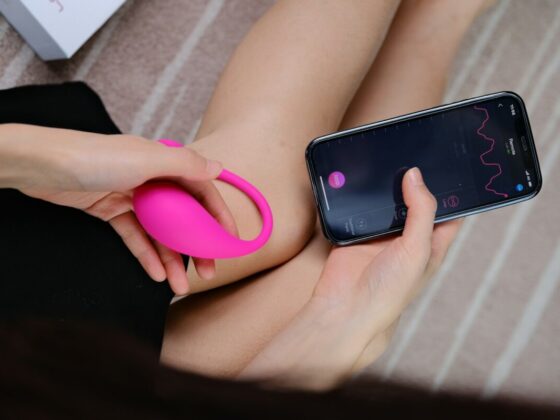Everything You Need to Know About Ultrasound Therapy
Ultrasound therapy is FDA-approved for more than a dozen treatment modes. However, the most common non-invasive ones include tissue warming and skin tightening.
This treatment tool has, in fact, been around for about seven decades now. After all, its first-ever clinical use dates back to the 1950s. Physical therapists used it to treat shoulder bursitis or tendonitis.
Today, the use of ultrasound continues to expand, with some even using it as an alternative to a facelift!
How exactly can ultrasound be therapeutic, though? Most importantly, what types of conditions and maladies can it help with?
We’ll address all these questions in this post, so be sure to keep reading!
What Is Ultrasound Therapy?
Ultrasound therapy, or therapeutic ultrasound, is a treatment tool that uses sound waves. The waves’ frequencies are beyond what humans can hear, about 1.0 to 3.0 Megahertz (MHz). In contrast, humans can only sense sounds between 20 to 20,000 Hertz (Hz).
Ultrasound therapy relies on the sound waves to manipulate, stimulate, or “provoke” tissues. In this way, therapeutic ultrasound introduces vibration into a treatment area.
This is why physical therapy is one of ultrasound therapy’s biggest users. Many physical or occupational therapists use it to treat musculoskeletal conditions.
How Does It Work?
Ultrasound therapy’s high-frequency sound waves create mechanical vibrations. These motions create acoustic energy that can have non-thermal or thermal effects.
An example of its non-thermal effect is encouraging cells to become more permeable. This results from the mechanical vibrations caused by the sound waves.
This makes it easy for fluids, such as blood, to pass through the cells. So, more nutrients also flow into and get absorbed by the cells.
As a result, the cells may heal faster, thanks to their higher nutrient uptake. This can then translate to quicker injury recovery.
As for thermal effects, therapeutic ultrasound can raise tissue temperature. The heat can then promote better circulation and local blood flow. This lets more oxygen and nutrients to get delivered to the injured area.
As with higher permeability, a boost in blood flow can also help speed up healing.
What Conditions Can Therapeutic Ultrasound Help Treat?
Therapeutic ultrasound is most common in physical and rehabilitative therapy. It’s also very popular among pain doctors, such as orthopedists and rheumatologists. However, ultrasound facelift, or “ultherapy,” is also gaining traction in the cosmetic industry.
Muskuloskeletal Disorders (MSDs)
MSDs are injuries or ailments of the soft tissues and bones. They can affect the nerves, muscles, tendons, ligaments, joints, cartilage, and discs. They’re very common, affecting about half of all adults in the US.
Ultrasound therapy offers a non-invasive way to ease pain in many MSDs. It may help with sprains, strains, carpal tunnel syndrome, and bursitis. Some researchers say that it may also help relieve myofascial pain syndrome.
Therapeutic ultrasound can help by mimicking the effects of traditional heat therapy. Its thermal effects can encourage more blood flow to the injured area. This may then promote better healing, as well as reduced pain.
Arthritis
Arthritis is a leading chronic pain condition, affecting over 54 million people in the US. Osteoarthritis (OA) is the most common type. However, gout and rheumatoid arthritis are also prevalent.
In any case, arthritis causes the joints to swell and become tender. As such, pain, stiffness, and lack of mobility are three of the most noticeable signs. These symptoms also worsen with age, to the point that they become disabling.
Ultrasound therapy’s heat and vibrations may provide arthritis pain relief. For starters, its ability to boost blood flow can help nourish and lubricate joints. Moreover, the heat can help relax muscles that may have gone stiff, too.
Ultrasound vibrations can also help stimulate stiff joints. As a result, you may be able to move them with less pain.
Keep in mind that moving your joints is the only way to “force” synovial fluid into your joint cartilage. This “fluid” lubricates and carries the nutrients the cartilage needs. This is why doctors say that failure to move can result in joint loss.
Ultrasound treatment may also help break up fibrous scar tissues. Too much scar tissue can cause more pain and further reduce one’s range of movement. These tissues usually “pile-up” when injured tissues rest for “too long.”
Cosmetic Treatments
Ultherapy is an FDA-cleared, non-invasive cosmetic procedure. It can work for rhytidoplasty (facelift), ophryplasty (browlift), and platysmaplasty (neck lift). It may also diminish lines and wrinkles affecting the upper chest area.
Ultherapy seems to works by boosting the body’s production of collagen. It’s the protein that gives the skin its elasticity, firmness, tone, and strength.
In this way, ultherapy may help lift tissues and also tighten loose skin.
Are There Any Ultrasound Therapy Dangers or Risks?
The FDA has approved ultrasound therapy for the treatments discussed above. However, the agency has only given its green light to licensed health experts.
Incorrect use of an ultrasound therapy machine can result in superficial burns. One way that this can occur is through long-term exposure. An example is if you leave the transducer head on the same spot for too long.
The consensus is that therapeutic ultrasound is safe for its approved uses. However, it can be dangerous for pregnant women or patients with a pacemaker. You should also never apply ultrasound on open wounds.
Therapeutic Ultrasound: An Alternative to Invasive Procedures
Ultrasound therapy may be a good fit for issues that don’t respond to standard treatments. It’s far less invasive than surgeries, and it’s much safer than pain medications. It may not work for everyone, but it won’t hurt to try it, so long as you get your doctor’s approval first.
Interested in more educational health, lifestyle, and fitness guides like this? Feel free to check out the rest of our site, then! Don’t forget to sign up for our newsletter, too, so you can get the latest news straight in your inbox.

:max_bytes(150000):strip_icc():focal(749x0:751x2)/boy-escapes-abuse-grocery-store-Leandra-Renteria-Gary-Dean-Wilson-Lenore-Wilson-032925-d5a736a553504a749e9eed17e9162fa5.jpg)


:max_bytes(150000):strip_icc():focal(1499x0:1501x2)/peo-horoscope-mercury-retrograde-pisces-031825-e915befe558d46e89136ad59739a8f81.jpg)






